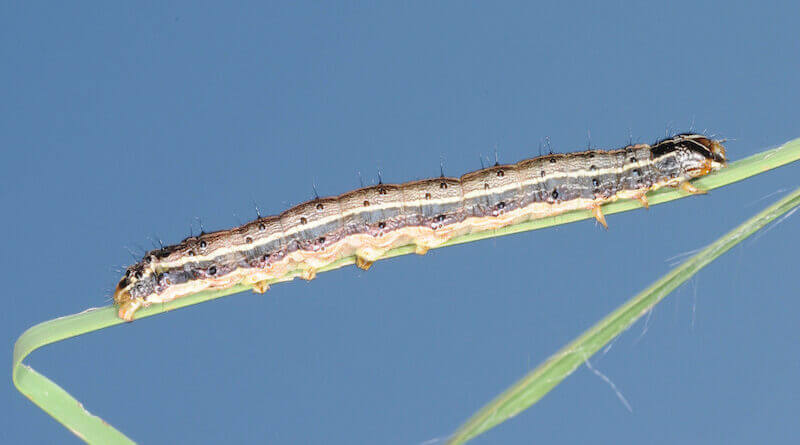Armyworms attacking DeSoto County lawns
We’ve seen a lot lately about an onset of Fall armyworms invading DeSoto County lawns. Dr. Blake Layton Jr. of Mississippi State University Extension has provided information about armyworms, which can quickly chew up lush grass before they move on to “greener pastures.”
Below read Layton’s information and suggestions about armyworms and how to stop them. The information comes from Layton’s article from the June 22 newsletter “Bug’s Eye View.”
Fall armyworms are serious but sporadic pests of bermudagrass throughout the state. This includes bermudagrass growing in hayfields and pastures as well as bermudagrass growing in home lawns, commercial landscapes, golf courses, and sports fields. They are called fall armyworms because populations are highest in late summer and fall, but they usually complete several generations here, with damaging infestations occurring as early as June during outbreak years. They also feed on other grasses, including crops such as corn and sorghum, and they sometimes damage broadleaf crops, such as soybeans or cotton, but bermudagrass is the crop most frequently damaged.
How can you keep fall armyworms from causing heavy damage to your hayfield or turfgrass this year? Learn to scout for fall armyworms and how to recognize early signs of infestation. Check your hayfields or bermudagrass lawns and turf regularly and be prepared to treat promptly once you detect an infestation. This point about being prepared to treat promptly is especially important for hay producers. Have your sprayer cleaned up and ready to go and have an effective insecticide on hand—or be able to get it on short notice, so that you don’t have to spend time getting ready to spray once a damaging infestation is detected. It only takes a couple of days for a heavy infestation of large fall armyworm caterpillars to turn a promising cutting of hay into a field of stems.
Why are fall armyworms so sporadic and unpredictable? Why do we have “outbreak years,” normal years, and years when they are lower than normal? Because they do not overwinter here. The moths have to migrate back into the state each year from the Caribbean, Mexico and other areas of South America. Severity and distribution of fall armyworm infestations depends on when moths arrive, how many moths arrive, where in the state they arrive, and weather conditions they experience once they get here. In other words, it depends on how the wind blows.
See Extension Publication 2717, Fall Armyworms in Hayfields and Pastures, for a list of recommended insecticides, application rates, pre-grazing intervals and pre-harvest intervals on forage crops. Information on scouting and thresholds is also included.
See Page 8 of Extension Publication 2331, Control Insect Pests in and around the Home Lawn, for information on do-it-yourself armyworm control in home lawns. For smaller lawns, one of the cheapest, easiest and most convenient ways to treat is to use one of the ready-to-use hose-end applicators that contains a pyrethroid insecticide, such as permethrin, cyfluthrin, bifenthrin, or cyhalothrin. For large lawns, one of the easiest and most convenient ways to treat is to hire a licensed commercial applicator. But if you have the right equipment, you can do your own spraying.
See Pages 12 and 13 of Extension Publication 1858, Insect Control in Commercial Turf, for information on fall armyworm control in sports fields, golf courses and other commercial turf. Before treating sports fields be sure to verify the product you plan to use is specifically labeled for use on sports fields and carefully check the re-entry interval.







Thanks, good, informative, USEFUL news!!!